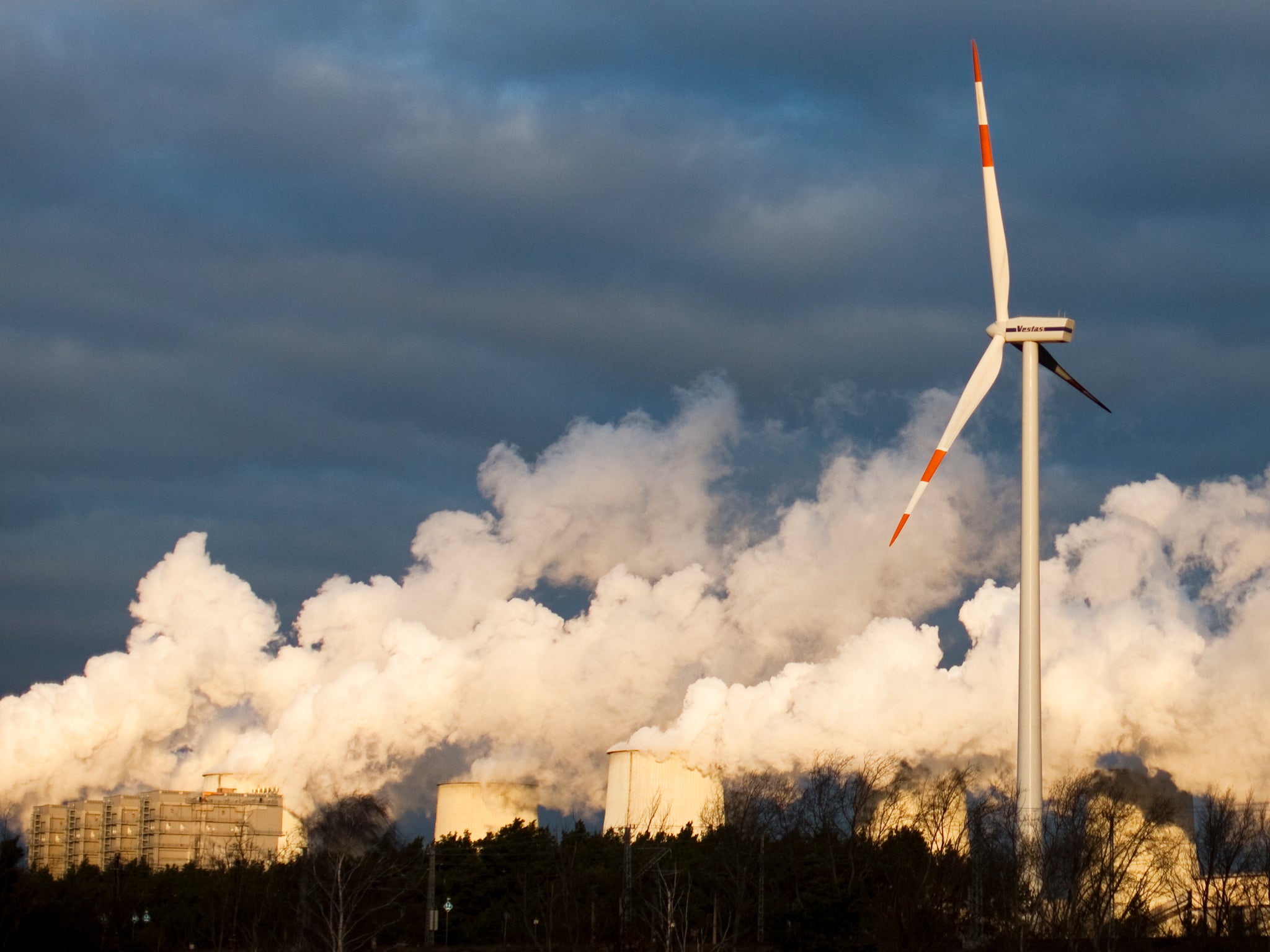UK’s net zero push undermined by energy grid that holds back renewables
Renewable energy providers call for reform of system that reserves capacity for gas power stations, even when they’re laying idle, finds Ben Chapman


Efforts to tackle the climate crisis are being undermined by an antiquated energy grid and outdated planning rules which discourage investment in renewable energy, industry figures and MPs have said.
Renewable energy developers warn that an ageing network of pylons, transformers and cables, designed for an era of large fossil fuel plants, is limiting the rollout of green power. They say it is no longer viable to build additional supply in parts of the country because the costs of connecting to the grid are too high.
The call for reform comes as MPs on the Environmental Audit Committee wrote this week to the business secretary, Kwasi Kwarteng, urging for renewed support for small-scale, community energy projects which have suffered from the withdrawal of a range of government subsidies.
Despite the government’s commitment to reaching net zero carbon emissions, local energy generation in the UK is not growing, unlike in Germany, Denmark and the Netherlands, the committee said.
Philip Dunne, chairman of the committee, wrote: “Grid connection costs and access charges can be too high for small groups and do not account for the wider decarbonisation benefits – including education and social support – that the projects bring to their communities compared to commercial renewable projects.”
The committee wants ministers to overhaul planning rules to force councils to engage with community energy groups and prioritise local power generation.
Commercial developers too are calling for reform to make it cheaper to connect renewable power to the grid.
A key issue is that gas power stations typically have access to a set amount of grid capacity, whether or not they are generating energy at a given time. Renewable energy suppliers are therefore unable to use it even if the capacity is lying unutilised.
Developers argue that these contracts should be renegotiated to allow fairer and more flexible use of existing capacity.
Many wind and solar developers joined the grid more recently than fossil fuel suppliers, under contracts which allow network operators to turn their supply down when there is excess energy being generated.
Typically this occurs when it is very sunny or very windy – exactly the times that renewables would be most profitable.
Investors in new energy supply also have to pay companies that operate the network for upgrading local infrastructure, which can be prohibitively expensive.
One renewables developer was recently quoted £40m to connect a new solar and battery storage development that was projected to cost £10m.
Tom Edwards, a consultant at Cornwall Insight, a renewable energy research and advisory company, would also like to see change.
“The way the network charging arrangements were built was all done back in the 1990s when it was thought we were just going to build gas forever,” he said.
Fossil fuel suppliers have “reserved connections” to an energy network which is already overloaded, he explained.
“So if you’re in an area where there’s already a lot of solar farms and no spare capacity, you’ve got to pay to build more network to get more power out.”
If renewables developers do not want to fork out millions to upgrade the network so they can connect, they can agree to a flexible connection which means they can be tripped off the system when there is too much power being generated.
The key question, Mr Edwards said, is how the cost of adding new capacity is shared between renewables developers – who build it and profit from it – and society as a whole through taxes and electricity bills.
He said older agreements between fossil fuel plants and network operators could be renegotiated so that capacity is not reserved all of the time but is instead allocated flexibly and can be used by renewables when gas power stations are laying idle.
This would free up space on the grid and allow a fairer distribution between all types of power. The plan would encourage renewables investment but also require compensation payments for the power stations that lose out.
Ofgem argues that flexible connections for new developments already offer a fair compromise, allowing extra supply to be added more cheaply and faster than would be the case if only guaranteed connections were available.
Flexible connections make more efficient use of the existing network, meaning developers do not have to pay as much for upgrades.
The regulator is currently considering ways to improve access to the grid, including by boosting investment in smaller-scale, local generation renewable energy.
There is far from universal agreement across the sector about where the problems lie and how to fix them, however.
Hugh Taylor, chief executive of Roadknight Taylor, a leading grid connection consultancy, said that while network capacity is indeed the most important factor holding back the decarbonisation of energy, renewables developers themselves must shoulder some of the responsibility.
Often when developers are told they must pay millions of pounds to connect new power supply “it is because they are submitting the wrong application in the wrong part of the network”, Mr Taylor said.
While some areas have seen lots of development and are now very congested, others offer much easier opportunities to connect. In some regions, just 8 per cent of applications to connect new supply to the grid actually go ahead. By contrast, Roadknight Taylor boasts a 90 per cent success rate nationwide.
The key is to assess the specific technology requirements and cost in each location, he said.
He added that the presence of a gas power station is unlikely to be the primary reason for renewables developers being told they must pay large sums if they want to connect.
“You have very little overlap in the profile of gas and wind or solar. When the wind is blowing or the sun is shining, that gas power plant is far less likely to be generating.”
Meanwhile, technology that manages when to use which energy supplies has advanced rapidly and the UK is “absolutely the world leader” in this area, Mr Taylor said.
“Smart grid technologies enable far more megawatts of renewables to be connected and where you have diversity of technology, battery, wind, solar, smart grid means you can connect far more often.”
He added: “There might be a level of curtailment [of renewable supply] where there is that overlap but the gas scheme is there to keep the lights on. That’s when it is needed.”
The Renewable Energy Association, which represents more than 550 companies in the sector, is calling for reform.
“The current energy system is predominantly designed around centralised large generators,” said Mark Somerville, the REA’s head of power and flexibility.
“While great strides have been made to decarbonise power to date – with the UK recently experiencing its greenest ever day – the UK will have to rapidly transition to a more decentralised and flexible approach to decarbonise the rest of the system.
“Localised renewables and energy storage systems must be able to connect to the grid easily for this to happen.”
An Ofgem spokesperson said: “In February we confirmed plans to allow the local electricity distribution companies to come forward with fresh new opportunities for green investment.
“This initiative could see around £300m invested over the next two years, with work sped up to kick-start the green recovery and invest in greener infrastructure, enabling more local renewable generation to connect to the grid and supporting greater network capacity for electric vehicle charging on motorways and key transit hubs.
“This will mean that more smaller developments with renewable generation capabilities or battery storage will be able to provide energy to the system during peaks in demand.”
Join our commenting forum
Join thought-provoking conversations, follow other Independent readers and see their replies
Comments